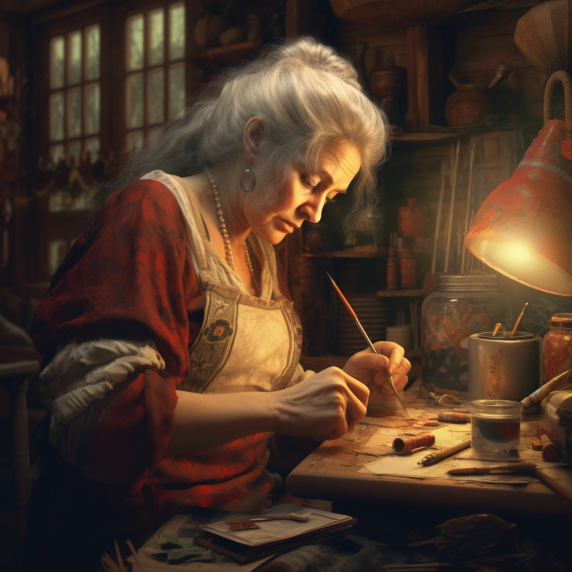Diamond painting is a popular and rewarding hobby that involves placing small, colorful resin diamonds onto a canvas to create a sparkling work of art. While it can be a relaxing and meditative activity, it is also time-consuming and requires patience and attention to detail.
However, with the right techniques and strategies, it is possible to speed up your diamond painting process without sacrificing the quality of your finished product.
In this article, we will explore some tips and tricks for speeding up your diamond painting process. From setting up your workspace to organizing your diamonds and testing out different techniques, we will provide you with valuable advice for maximizing your crafting time and creating beautiful custom diamond paintings in less time.
Whether you are a seasoned diamond art painter looking to streamline your process or a beginner eager to dive into this popular craft, this article is for you.
Setting Up Your Space
To optimize the speed of diamond painting, it is recommended to set up a dedicated and organized space that is conducive to maximizing efficiency and reducing distractions. One way to accomplish this is by designating a specific spot in your home that is solely for diamond painting. This area should be equipped with all the necessary materials and tools, including a comfortable chair, good lighting, and a flat surface to work on. Additionally, it is helpful to wear your hair in a ponytail or another style that keeps it out of your face and off the painting surface.
Another tip for maximizing efficiency is to use a large plastic tray or chocolate box to work with multiple trays and DMCs at the same time. This allows for easy access to all the necessary colors and reduces the time spent on searching for specific diamonds. By keeping your diamonds organized by numerical DMC order, you can easily locate the colors you need and avoid wasting time on unnecessary searching.
Overall, these organization techniques can help you speed up your diamond painting and enjoy the process even more.
Organizing Diamonds
Organizing diamonds by numerical DMC order is a recommended strategy for efficient diamond painting. This method ensures that the diamonds are readily accessible and easy to find, reducing the time spent searching for the appropriate color.
Color coding is also a helpful practice, especially when working on larger projects that require multiple trays. It is essential to keep track of the colors used to prevent confusion and avoid mistakes.
Storage solutions are another critical factor in organizing diamonds for diamond painting. Using a large plastic tray or a chocolate box is an effective way of keeping the diamonds organized and reducing clutter. These containers allow for multiple trays and DMCs to be used at once, making it easier to switch between colors.
It is also important to keep the containers close to the workable area to save time and reduce strain on the hands and arms. Overall, organizing diamonds is an essential aspect of diamond painting that can significantly increase the speed and efficiency of the process.
Techniques and Strategies
Efficient diamond painting requires the implementation of various techniques and strategies to enhance the overall process. One such technique is using favorite tools. Diamond painting enthusiasts often have specific tools and techniques that they prefer over others. Some may find that using a straightener to flatten the canvas or a wax pencil to pick up diamonds more effective than other tools. It is important to test out different tools and techniques to find what works best for each individual's style and comfort level.
Another strategy that can speed up the diamond painting process is working by section versus color. Working by color involves completing one color throughout the entire canvas before moving on to the next color. This method can be time-consuming and may require frequent diamond changes, which can slow down the overall process. On the other hand, working by section involves completing one section of the canvas at a time, regardless of the color. This method can be more efficient as it reduces the need for constant diamond changes and allows for quicker progress on the canvas. Ultimately, it is up to personal preference and what works best for each individual's diamond painting process.
Frequently Asked Questions
What types of tools and materials are recommended for diamond painting?
Diamond painting starter kits typically include a canvas with a printed design, adhesive or glue, and diamond drills. Advanced diamond painting techniques may involve using multi-placer tools, light pads, and wax to improve accuracy and efficiency.
How long does it typically take to complete a diamond painting project?
The time it takes to complete a diamond painting project can vary depending on several factors. Tips for speeding up the process include organizing diamonds by DMC order, testing different techniques, and working in sections. Other factors that can affect completion time include the size and complexity of the design, the skill level of the painter, and the amount of time they dedicate to the project.
Can diamond painting be done on different surfaces?
Diamond painting can be done on unconventional surfaces such as wood, metal, and plastic. However, it is important to choose the right diamond painting kit that is appropriate for the chosen surface. Tips for choosing the right kit include considering the size of the surface and the type of adhesive used.
Are there any health concerns or precautions to take while diamond painting?
To prevent eye strain and reduce the risk of developing musculoskeletal disorders while diamond painting, proper posture is crucial. It is recommended to sit at a comfortable distance from the painting, use adequate lighting, take frequent breaks, and stretch regularly.
What are some common mistakes to avoid while diamond painting?
Common mistakes to avoid in diamond painting include improper diamond placement and choosing the wrong size canvas, leading to uneven or incomplete designs. Attention to detail in these areas can greatly improve the overall quality of the finished product.


